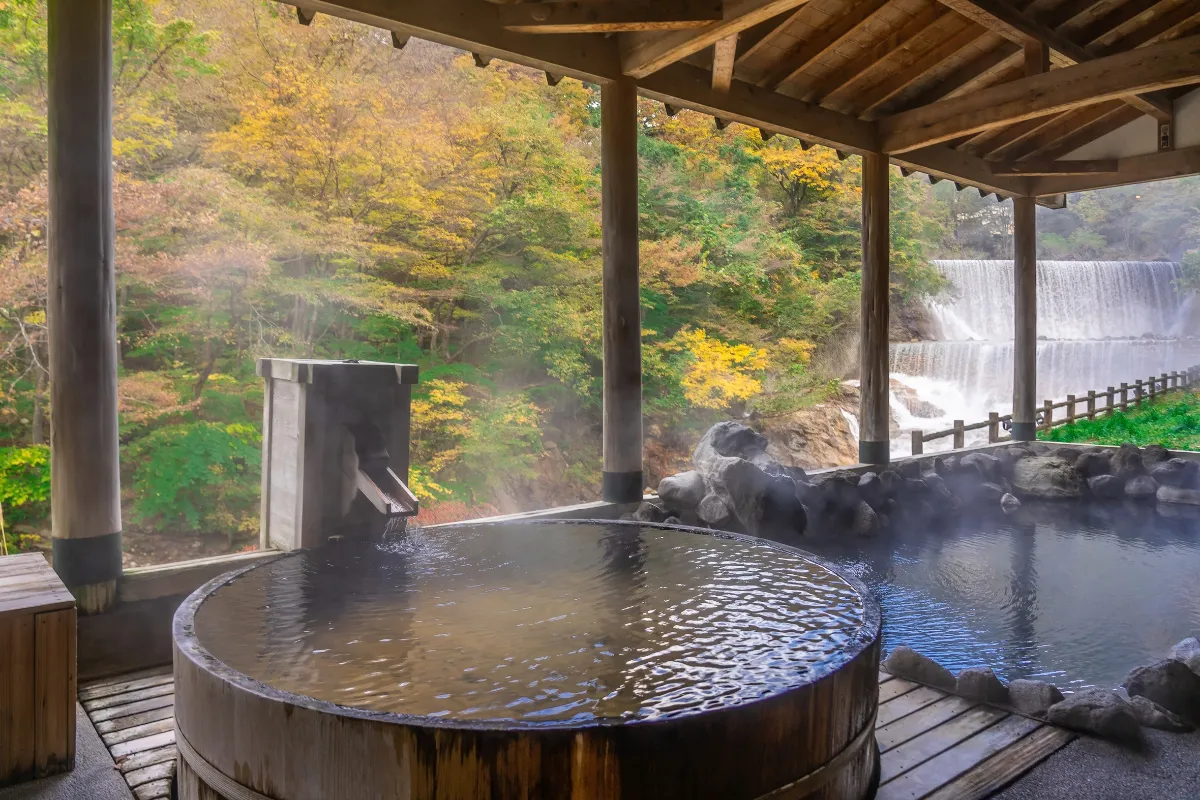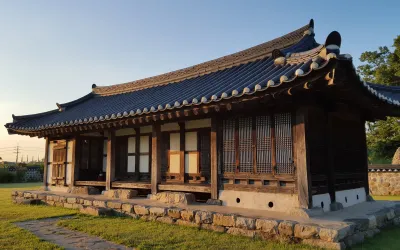Captivating Creativity: Japanese Bathtub Designs To Inspire A New Appeal In Your Bath
The bathtubs in Japan are a unique design element that embraces tradition and innovation, bringing a tranquil and soothing ambiance to a modern bathroom. The bathroom often serves as a place of solace and relaxation. The heart of most bathrooms centered around a single feature is the bathtub.
No ordinary component, but a fount of indulgence where we unwind after a hectic day. But have you ever considered turning your tub into more than just a feature, but a masterpiece? More specifically, a Japanese bathtub masterpiece?
Japanese bathrooms often harmonize nature and serenity through natural materials and calming color palettes. Bathroom design elements like stone vessel sinks, small shaker-style cabinets, and alcove shelves are built in unison with the traditional Japanese bathtub, complementing the overall aesthetic.
Thus, let’s step on a delightful cultural journey and delve into the universe of Japanese bathtub designs.
The Japanese Bathtub Culture
Japanese bathtub culture, known as ‘ofuro,’ is a significant part of daily life in Japan. Toptotiles considers this traditional practice when designing our products. Bathing in Japanese culture is more than just getting clean; it’s a time for relaxation and reflection.
The traditional Japanese bathroom features a soaking tub for the bather to submerge themselves in warm water fully. Before entering the tub, the bather cleans themselves with a rinse or shower. The purpose of the soaking tub is not for cleansing but for relaxation.
The Japanese bath culture influences our bathtub designs, focusing on creating a peaceful and calming environment for the bather. With good products, each bathing experience can bring a sense of tranquility, much like the traditional Japanese bathing ritual. The goal is to transform your daily bathing routine into an enjoyable and stimulating experience.

Exploring Ofuro And Japanese Soaking Tubs
Japanese bathing culture revolves around a unique element – the ‘ofuro.’ It’s not an ordinary bathtub; it’s an immersion into tradition, a nod to Japanese culture, and much more than a place to take a bath. This is the part of the Japanese home where serenity meets extravagance.
The ofuro, better known as the Japanese soaking tub or the heartbeat of bathtubs in Japan, underpins the distinct bathing culture. With a more bottomless construction than Western bathtubs, these tubs are designed for full-body submersion, elevating bath time to a soulful experience. They overflow with more than warm water; the relaxing and warming immersion offers Japanese people an end-of-day respite, a break from their fast-paced life.
Typically made of acrylic or traditional Japanese hinoki wood, these tubs, known as bathtubs in Japan, are an oasis of calm. They have intelligent features like filters and a re-circulation system to keep the water warm. Some even showcase a control panel for fine-tuning the bathing experience.
Bathtub Vs. Shower: Finding The Balance In Japanese Bathrooms
In a Japanese bathroom, the tub and shower aren’t just another pair of fixtures but are positioned as a cohesive unit for the bath experience. The shower serves as an essential pre-soak rinse. A bather would scrub up and rinse off here before proceeding to the tub for relaxation. The aesthetically pleasing design choice also works well for smaller bathrooms, ensuring space is used effectively.
The traditional Japanese bathroom is unique in its layout. Bathtubs and showers co-exist harmoniously within its space, providing an interesting balance. The central role goes to the trusty bathtub, often preferred over showers in Japanese homes.
There’s a reason why bathtubs steal the limelight. Japanese people have an ingrained culture of soaking in hot springs or onsen. This seeps into their household bathing preferences, favoring a deep tub soak over a quick shower. They prefer this because of its benefits; relaxation, purification, and rejuvenation intertwine in the traditional Japanese bath.
However, showers don’t take a backseat entirely. It’s a necessary prelude to the ofuro ritual. Before entering the bathtub to relax and bathe, a rinse or shower is required to cleanse the body. While still holding the bath in high regard, the modern Japanese bathroom makes room for a revitalizing shower experience.
Transforming Your Bathroom Inspired By Bathtubs In Japan
Bringing in the essence of Japanese style starts with understanding the culture. The Japanese follow a principle of harmony and balance, embodied by their tradition of the ‘ofuro.’ A sculptural soaking tub, ideally hinoki wood or acrylic, becomes the centerpiece of this transformation.
The bathroom layout also takes inspiration from Japanese principles, separating wet and dry areas. The soaking tub is specifically for relaxation, not washing. Ensure you have a separate room for cleansing before soaking.
Japanese bathrooms are known for their space efficiency. Utilize intelligent storage solutions and keep clutter to a minimum to recreate a tranquil, minimalist aesthetic reminiscent of Japanese design.
1. Choosing The Suitable Materials And Features
In addition to the material of the soaking tub, natural materials are a distinguishing element of Japanese design. Bamboo, stone, and wood feature heavily in these bathrooms, bringing a rustic yet refined touch.
Remember to include elements like an overflow and re-circulation system in your tub to mimic the long, warm soaks characteristic of Japanese baths. Other features such as heated floors, a built-in bench, or an insulated cover for the tub add to creating an authentic Japanese bathing experience.
2. Color And Décor Options To Complement The Bathtub
Japanese design embraces earthy, natural colors to instill a calm atmosphere. Neutrals like white, beige, and gray can form the color palette of your space, accented with the warm tones of wood and stone.
The décor can include potted plants for their aesthetic contribution and ability to purify the air. Lighting should be soft and calming; consider dimmable lights or even candles.
Artwork or accessories should be minimal but can include Japanese cultural symbols or Zen elements such as rocks or water features.

How To Bathe Like You’re In A Japanese Bathtub
If the traditional Japanese bathing experience entices you, Here’s how to recreate the ritualistic, relaxing bath experience at home. Starting with the bathtub, find a deep soaking tub that fully submerges your body, echoing the design of a Japanese ofuro.
- First, begin as any Japanese bather would – by cleansing thoroughly. This isn’t optional; it’s essential respect paid to the bath and its purpose. Whether you have a separate shower or a rinse area next to your tub, follow this Japanese bath rule.
- Second, it’s soaking time. Draw hot water into the bathtub, letting it become your temporary hot spring. Onsens are rich in minerals for relaxation, and you might like to replicate the benefits with bath salts.
Extra features like a heated backrest can significantly amplify your bath experience, while an aroma diffuser with hinoki oil could recreate a relaxing natural environment.
The Bathtub Design: A Blend Of Functionality And Aesthetics
In Japan, taking a bath goes beyond just cleansing!
It’s deeply influenced by culture and bathing habits, which define the bathtub design in Japan. Japanese soaking tubs, or ofuros, are more than water-filled vessels; they are pivotal to the Japanese bath experience.
Space, depth, and material are key elements in crafting these bathtubs in Japan. They’re compact and space-efficient, ideal for Japanese homes. However, their deeper construction, enabling a full-body submerge, sets them apart from Western bathtubs. With its thoughtful overflow and re-circulation systems, the design keeps the water warm, extending the relaxing bath time.
Materials range from acrylic to traditional hinoki wood, chosen for resilience and the ability to retain heat. Interestingly, the design also considers the ritual of bathing. As part of Japanese culture, individuals wash and rinse in a separate shower area before entering the bath, maintaining the purity of bath water in the bathtubs in Japan.
By adopting the essence of bathtubs in Japan and their bathing habits, you open doors to a quaint sanctuary where you can indulge in a truly calming and rejuvenating bathing ritual right at home.





0 Comments